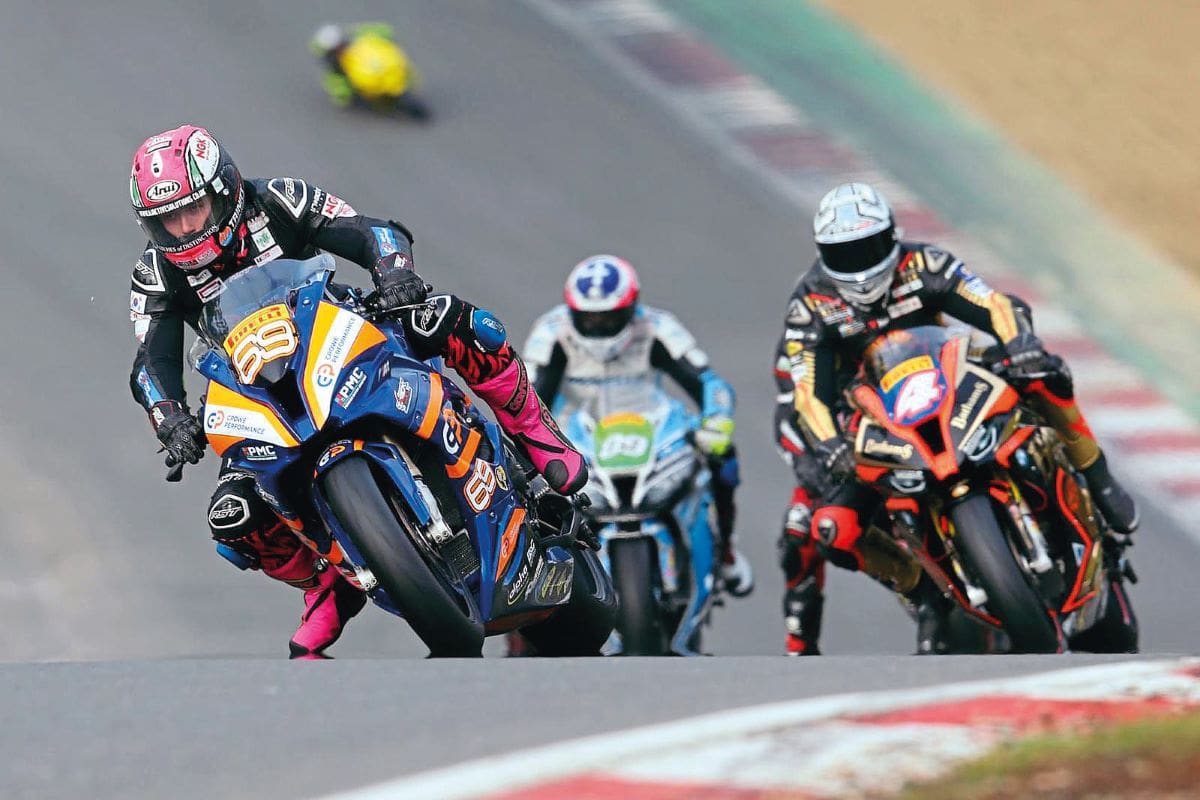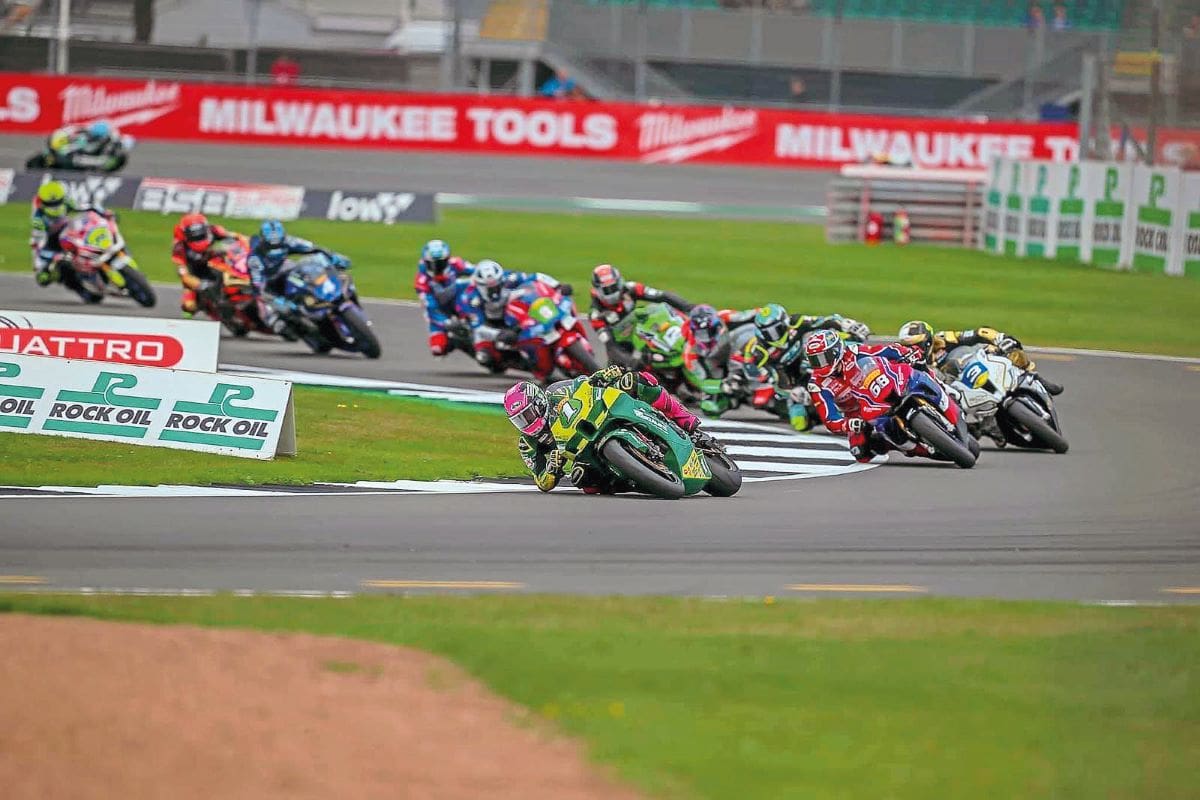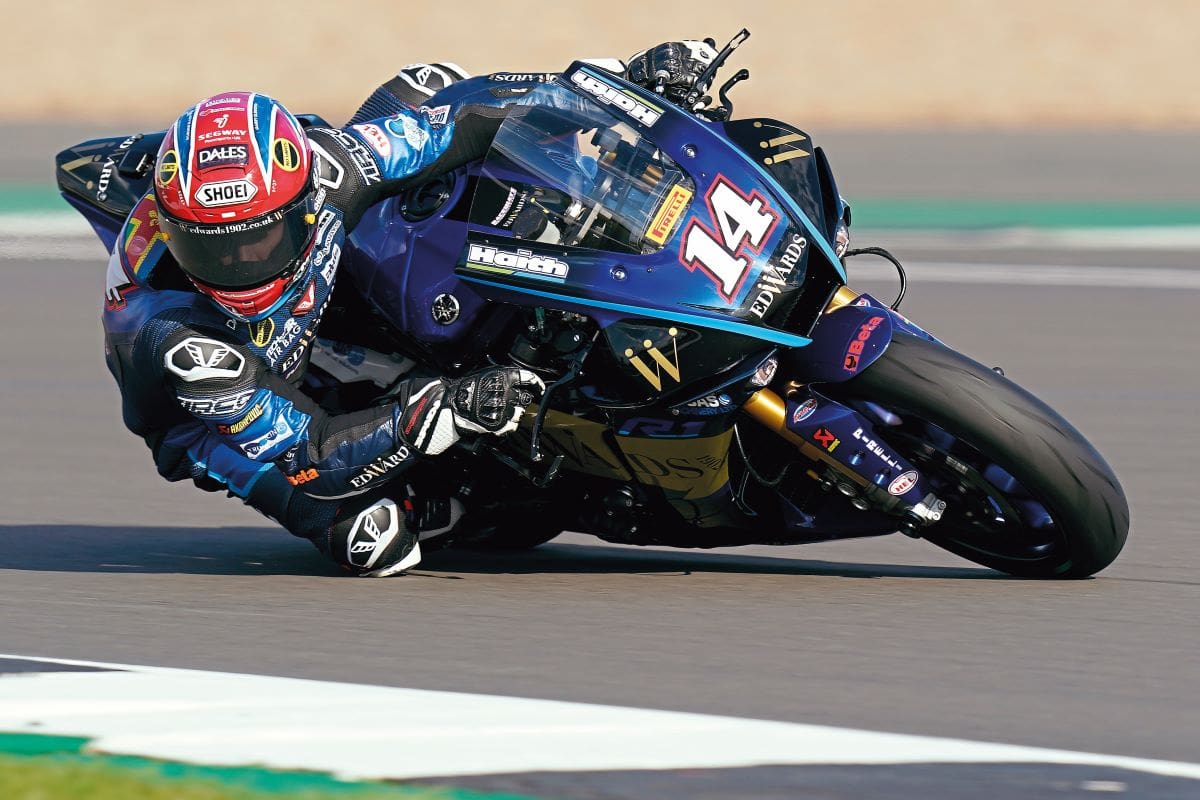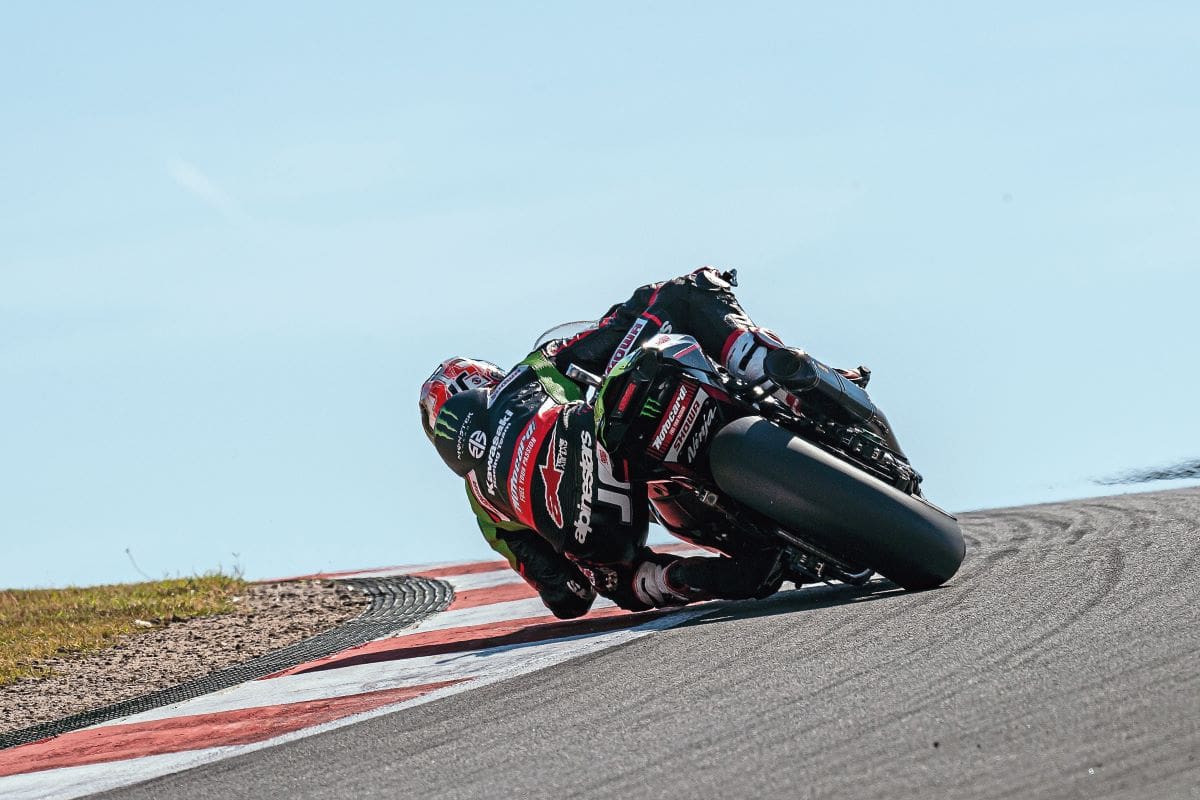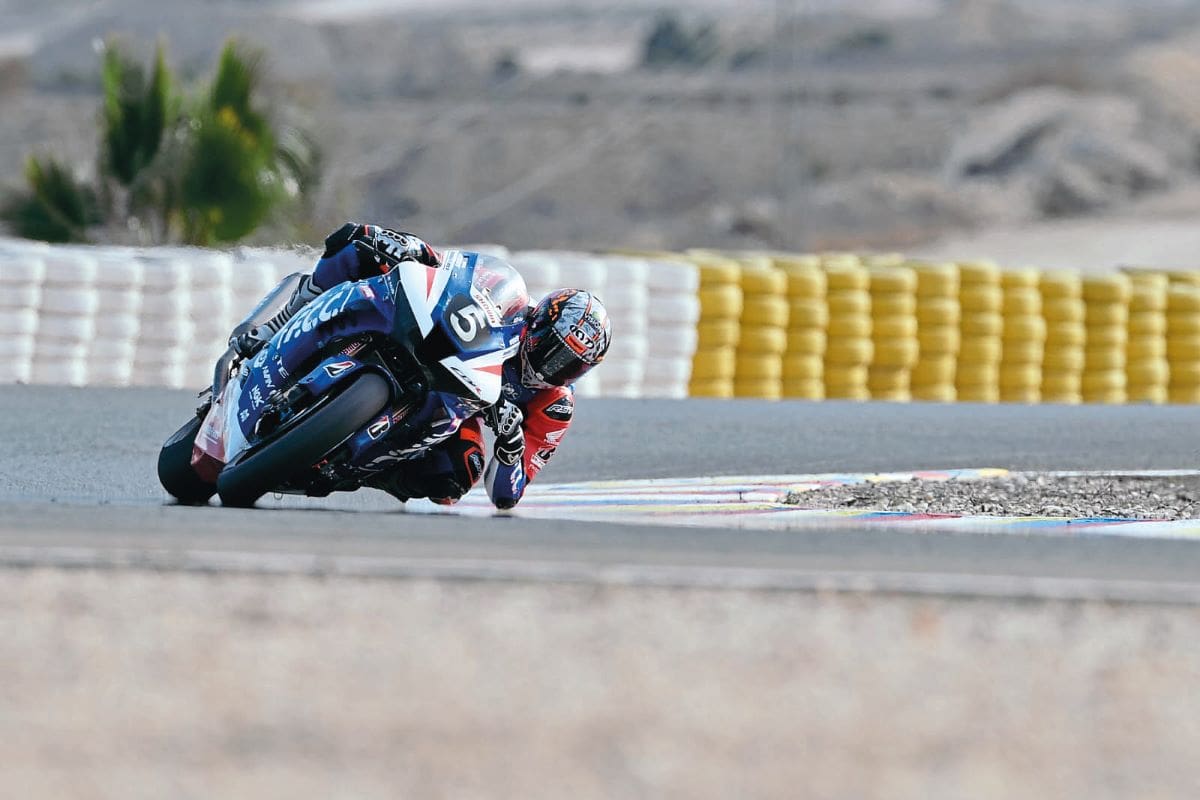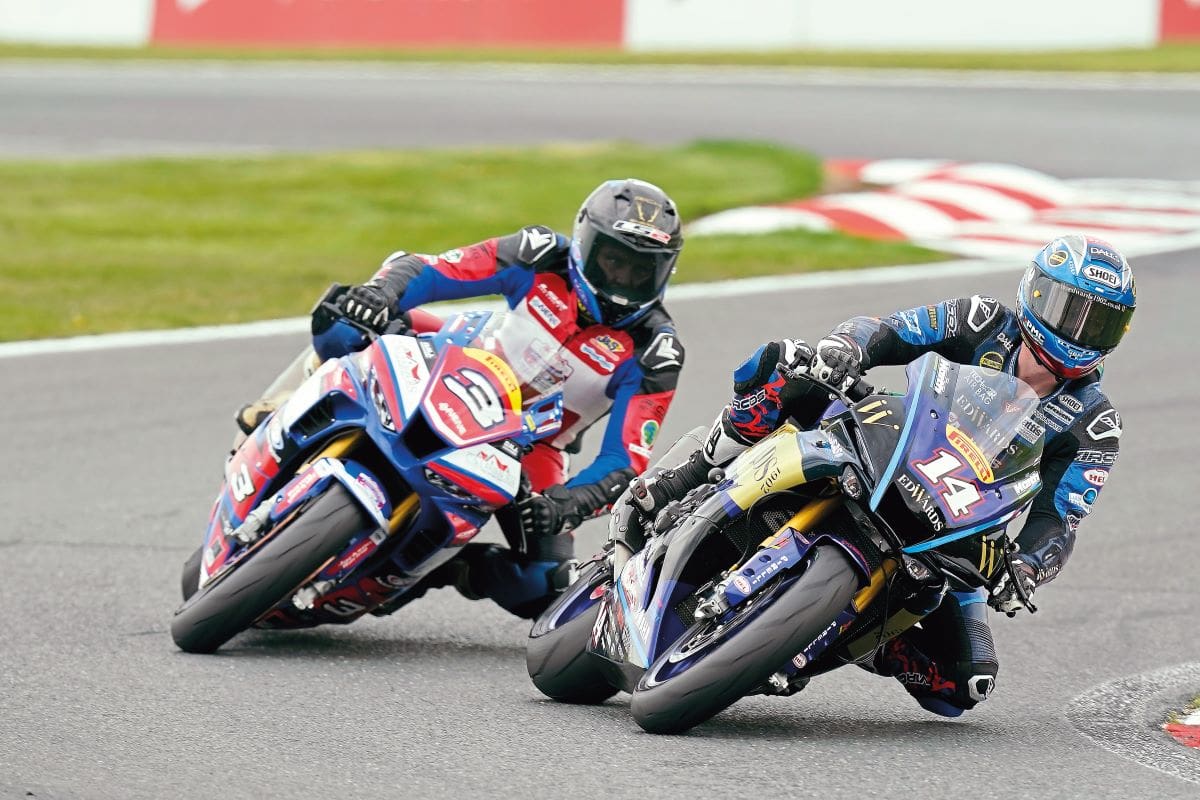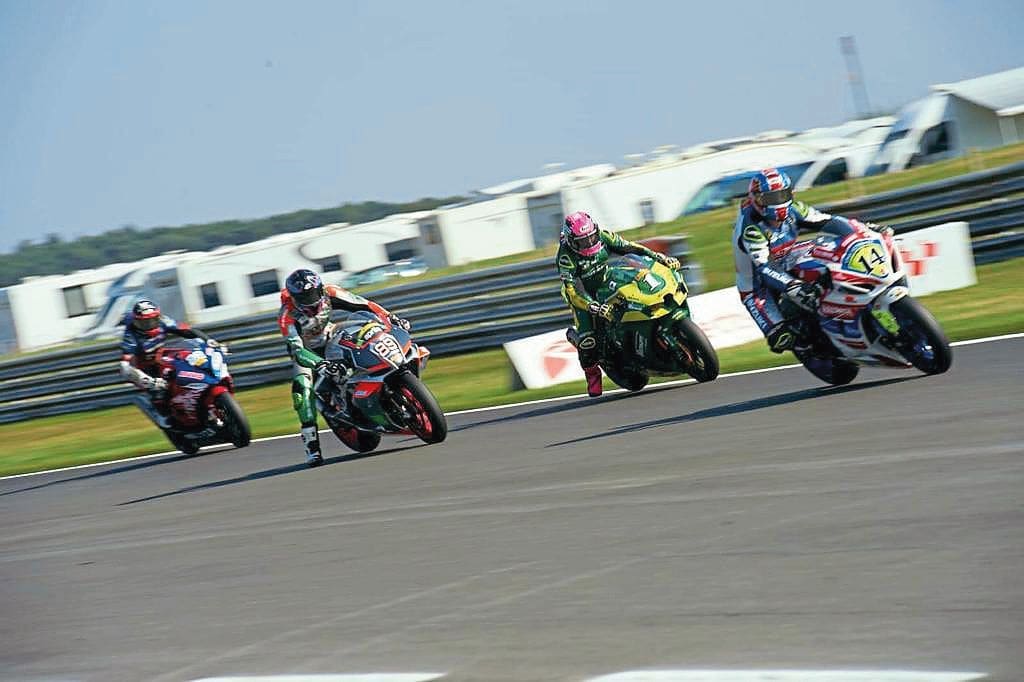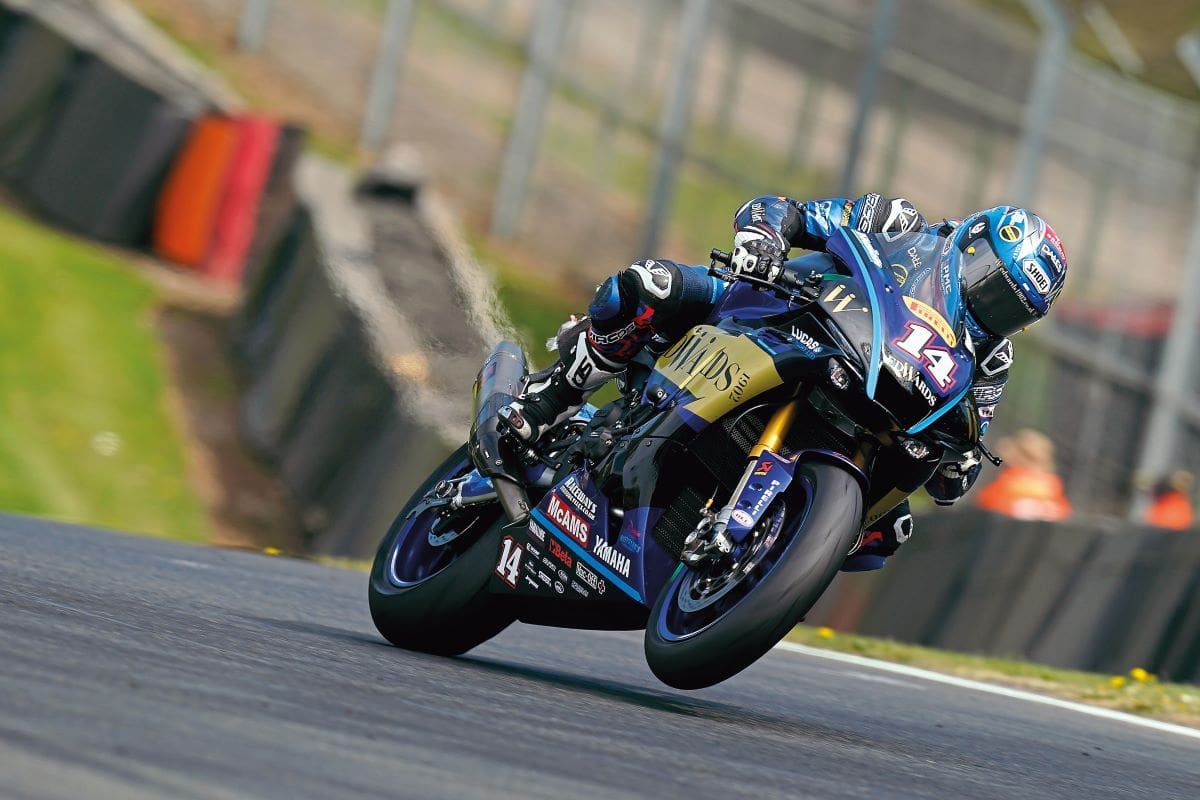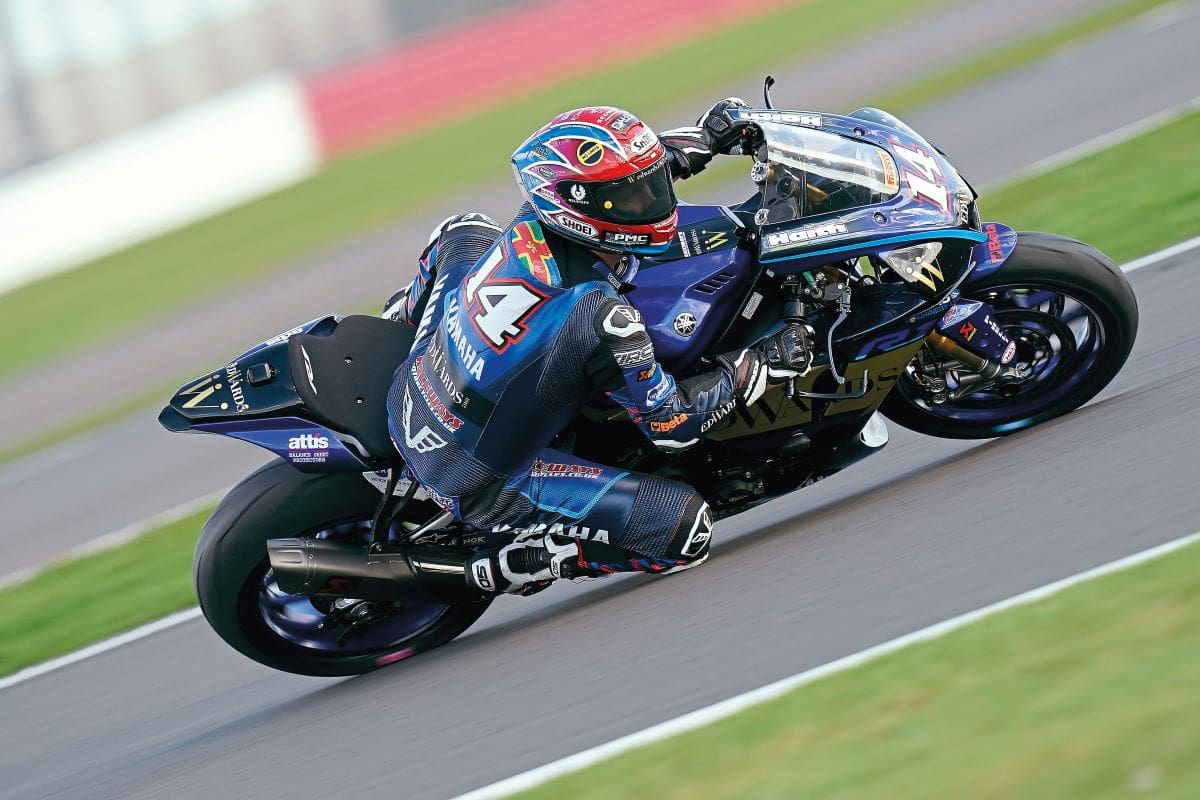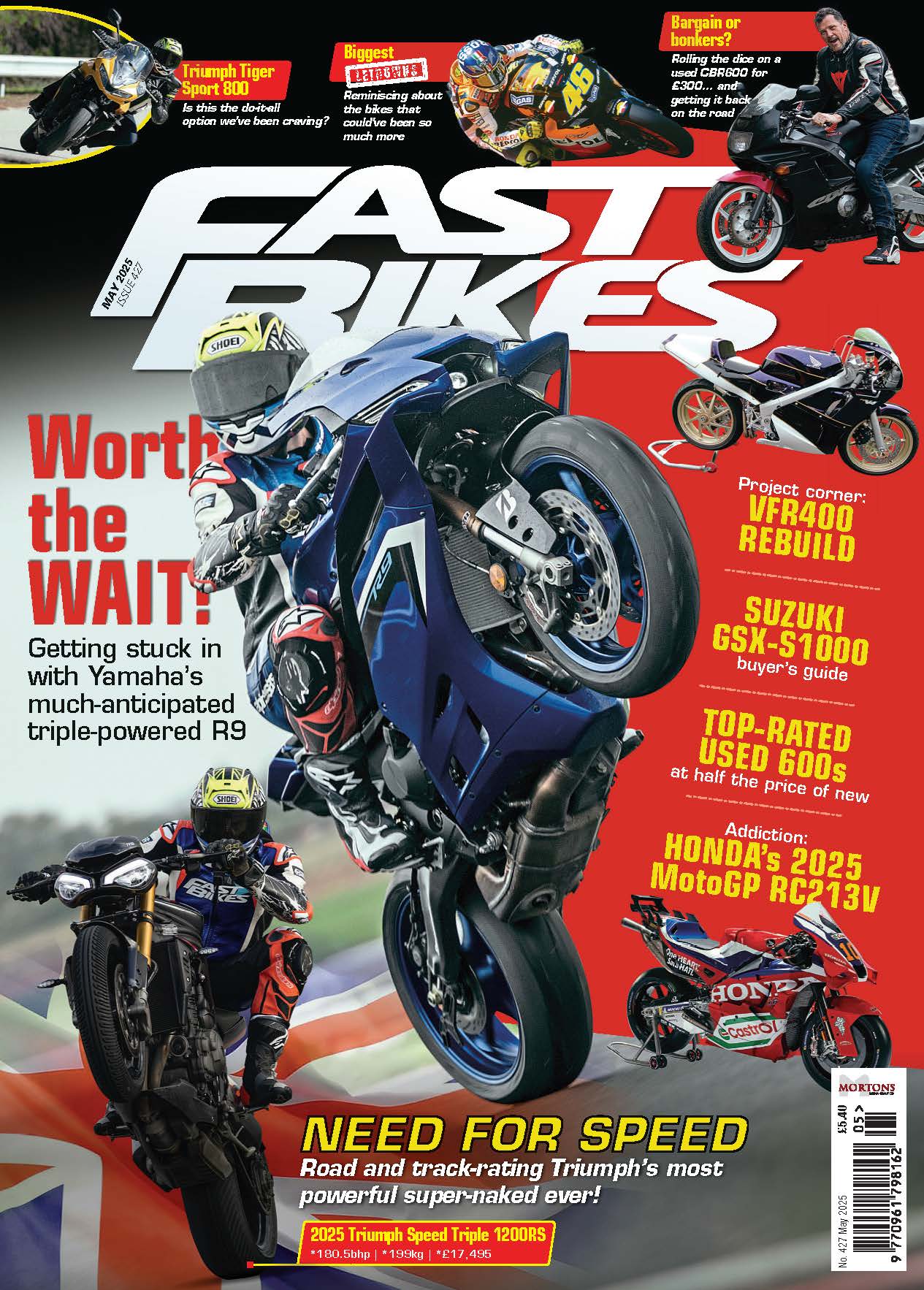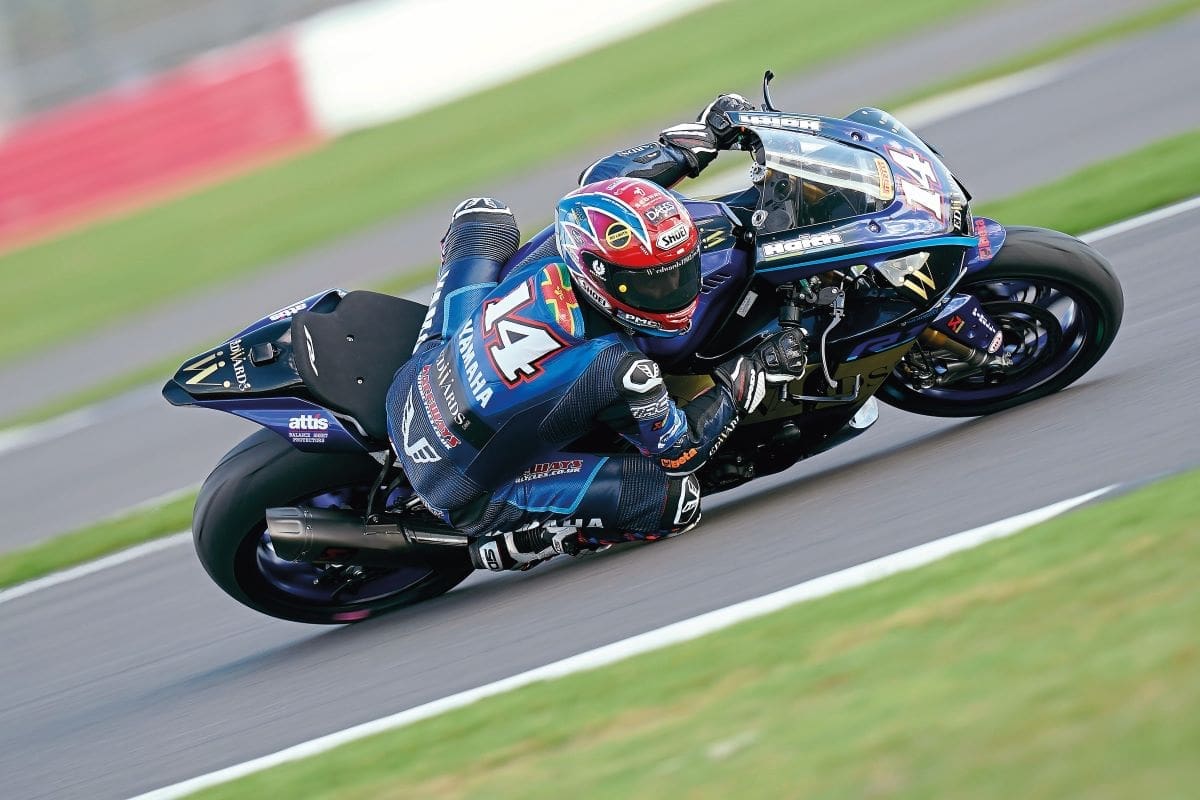
PICS> DOUBLE RED, GEEBEE IMAGES, MCAMS YAMAHA, Impact Images
I’d say I’ve got a very distinctive style. It’s certainly not modern, but it’s not quite Mick Doohan, so it’s somewhere in between. I think that having an off-road background and not getting onto tarmac until I was 18 has played a massive part in my upright style, and although it has somewhat developed in recent years, I do still find it incredibly hard, or forced, for want of a better word, to hang off the bike like the young talents of today do. If you’re getting on tarmac from a young age and you’ve grown up watching the MotoGP stars dragging their elbow sliders, then that’s the style you’re naturally going to adopt. But as an older rider starting out and having never watched a MotoGP or BSB race before I got going, I didn’t have a clue. All I wanted to do was get my knee down, and that was a big deal in itself, taking me two days to get the hang of.
Dragging an elbow isn’t a new craze, and certain riders have been doing it for decades, but since the Marquez era, it’s been adopted by basically everyone and has reset the body style standard as we know it today. There’s clearly an advantage for doing it at that level and on those circuits. But what is that advantage? Why are riders doing it? Does it really make them faster through a corner? Well, in a nutshell, the bikes, the electronics, and the tyres have improved so much in recent years that it has allowed riders to push the limits and find whole new levels.
Hanging the body off the down inside of the bike lowers the centre of gravity, helps to steer the bike through the corners and, in many cases, acts as a third wheel to help save a crash. We’ve seen it time and time again with Marc Marquez when he pushes the front so hard that it washes away, and he can push the bike back up using his elbow and knee and save a crash. Having your elbow skimming the deck as well as the knee provides yet another point of contact between you, the bike, and the ground, so you gain a better feel and reference for what’s going on underneath you.
But it’s not just as simple as hanging off like a monkey for every single corner – you need to know when to do it, and when not to. Not every corner lends itself to this style and you must take into consideration things like grip level, line through the corner, bumps in the surface, tyres, and the bike you’re riding – all can affect whether you should be going for the elbow down. Typically, the smooth, long radius corners are ones to be going elbow-down on, and as you get comfortable with this style it’ll become more apparent with the other type of corners.
MotoGP and World Superbikes lend themselves to this style much more so than British Superbikes. Their tracks are generally much wider and smoother, with longer radius corners, and they’re all riding on larger diameter slicks with complex electronic aiding systems, whereas the British Superbike circuits are often much tighter, narrower, bumpier, and of a stop-start nature. The BSB class does use the Pirelli slick, the same as in WSBK, but with no electronics aids, such as traction control. The majority of the other support classes use the Pirelli Supercorsa treaded tyres, which don’t provide the same grip levels at lean as slicks. I’m racing in the National Superstock 1000 class, using treaded Pirelli Supercorsa tyres, and we give away at least one second a lap to the SBK class in tyre grip alone. When you take all of that into consideration, you can see why British riders aren’t so commonly dragging an elbow through the corners… but it does still happen.
When you look at who is and who isn’t doing it in the British paddock, there’s a clear pattern between the young riders and older generation riders. The likes of Chrissy Rouse, Rory Skinner, Brad Ray and Ryan Vickers are all over the elbow-down style and they’re incredibly fast while doing it. Then you’ve got the likes of Josh Brookes, Tommy Bridewell and Jason O’Halloran who very seldom ride fully elbow-down, and that’s what leads me to my question – do I need to be doing it? I’ve won races and set fastest laps at Silverstone (of all places – the least BSB-style track we’ve got over here) and I didn’t have my elbow anywhere near the deck, but could I have been even faster with it down?
I’ve recently returned from Spain having had a few days on track at Almeria and Andalucia, doing some testing on my Edwards 1902 Yamaha R1, and once I’d learnt the circuits and gained a good feel for my new machine, I started having a play with getting my elbow down. Initially it felt awkward in my wrists: I felt disconnected to the bike and therefore lost the feeling for what was going on underneath me. I just could not see how it could be an advantage whatsoever, but that was because I was having to force it so dramatically and it was completely unnatural. I thought that it would have come to me more naturally during the few days on track, especially with the flowing nature of the Spanish tracks, but it just didn’t feel right and I wasn’t able to feel any benefits from it whatsoever, so I resorted to my default riding style, which is to keep my upper body more within the bike and where I feel in tune with what’s going on underneath.
On the flip side of all of this, I do think there is a huge advantage of riding with your head more upright and in the middle of the bike, and that is for visibility of the track and riders around you. When you’re cranked over with your head buried down the inside of the bike, it really does limit your vision of riders around you and where the edge of the track is. I also think that my style saves a lot of energy. Moving your arse from side to side helps steer the bike and keeps the body weight low, but by not moving your upper body so much doesn’t stop the bike turning, yet most definitely helps conserve some energy in the fast changes of direction, such as Hall Bends at Cadwell, or Maggots and Becketts at Silverstone.

Gino Rea came back to British Superbikes after a long stint in the World Championship scene and most certainly brought the world style with him. If there was an award for getting your elbow down, then it’s all yours, Gino. Here’s what Gino had to say about his riding style…
“To be honest, I don’t feel like I overly hang off anymore. It started back in 2009 when I was riding the Honda in Superstock and I always just felt like I had to lean off further and further with my upper body to help the bike turn. I’ve got a short body and I always had to put my chest, shoulder, and head low, down the side of the bike, to force the bike around the corners. For me, trying to get your elbow down is wrong if you’re having to force it; you need to be using the right lean angle with the bike first, and then when you’re really trying to find that last little bit and drag the bike around the corner, that’s when I find myself sliding my elbow on the floor.
“I first started doing it on the curbs and I couldn’t believe it. It wasn’t such a common thing back then, and it just developed from there. It actually got to a point where I was hanging too far off the bike and I wasn’t using the lean angle, so I’ve had to try and tame it a little over the last five years or so and now it’s purely a tool to help steer the bike through the middle of the corner. “I see riders leaning too far with their body, and that just prevents them using the lean angle of the bike and defeats the object.
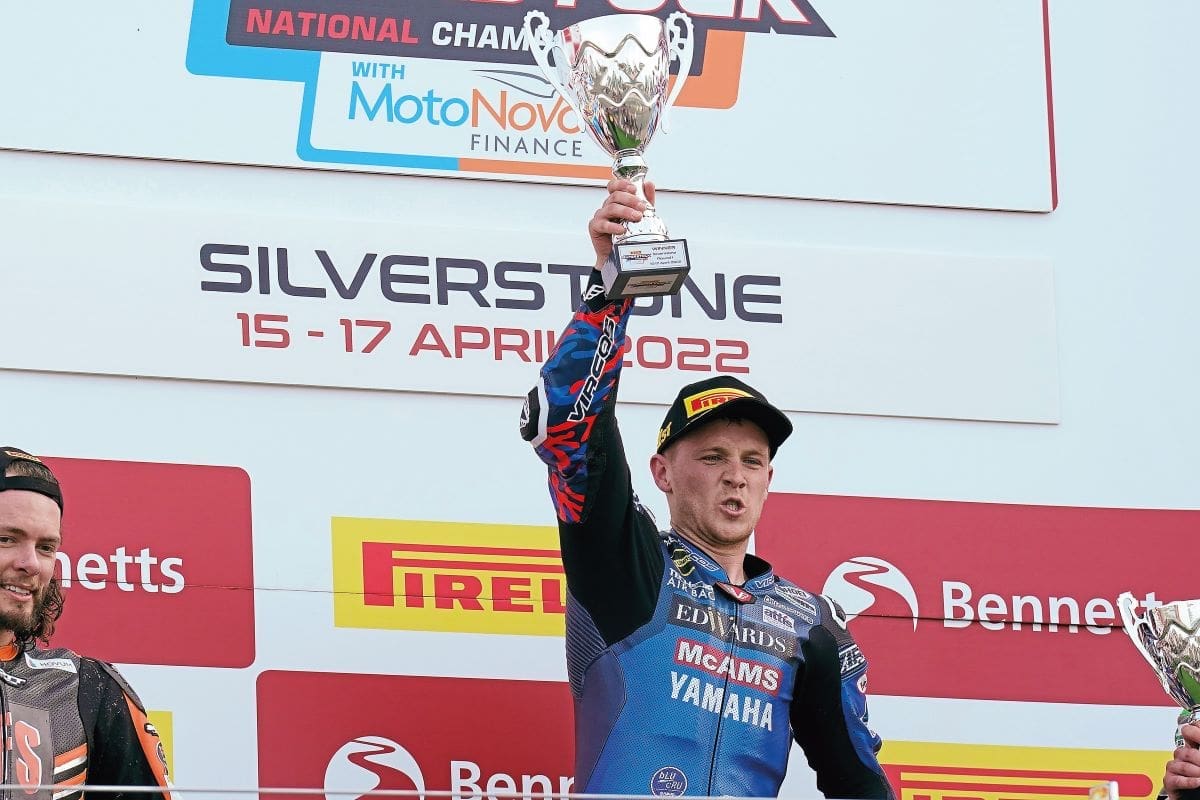
“I do a lot of rider coaching and it certainly isn’t what I teach first. You need to ride with your core and your lower body, and the upper body needs to be relaxed. As far as the leg dangling goes, that started in about 2009 also and I think it’s because of my motocross and supermoto background. As soon as the rear starts to slide going into a corner on those bikes, you stick your leg out as a balancing tool and an extra reference with lean angle and sliding. When I got into Superstock and started backing the bike in, it just felt natural to stick my leg out and I do think it helps to lower the centre of gravity, but I don’t do it in every braking zone and it depends on what the corner approach is like and how much rear brake I need to use.”
But what works for one man doesn’t necessarily work for the next, and if anyone knows what they’re talking about, it’s Tarran Mackenzie, our 2021 British Superbike Champion.
“It’s not a benefit for me to ride with my elbow down because it’s not natural. I’m sure it is for the riders who do find it natural, and if you’re a bigger rider, then it could be beneficial. We do see riders saving the front on their elbows, more so in MotoGP but also in World Superbikes now, so clearly that works.
“But for me, because I’m small and it’s unnatural, when I do get it down, it’s like, ‘sh*t, I got my elbow down’. For the bigger riders like Brad Ray or Storm Stacey, it’s maybe uncomfortable for them to ride without their elbows down… I don’t know.
“I also think it depends what bike and tyres you’re riding on. When I was riding the Moto2 bike with Dunlops, I could carry a lot more lean angle than I could with my Superbike on Pirellis, and I’m sure the likes of Pedrosa, Bastianini and Martin, who are all similar in height to me, have no trouble getting their elbows down with the smaller bikes and super-sticky tyres, so it really does depend what you’re on. With the leg dangle, I do it now and it’s become more natural recently. I went through a stage of trying not to do it, and that’s when I realised it had become natural for me. In the braking zones I feel its helps take the weight out of my arms, and because I don’t have a long reach, I can’t push my body weight back any further, so the leg dangle helps move the weight back and down.”
Chrissy Rouse won the 2020 National Superstock 1000 championship and rides with his upper body stuck to the tank and his elbow down. Here’s what he had to say: “It’s not something I’m trying to do anymore, it’s completely a natural style. When I first jumped off the 125 and onto the 600cc machines, all I wanted to do was get my elbow down and it was almost a goal so I could get some cool pictures. I used to grab the end of the handlebar to try and get my elbow even closer to the tarmac through the corners, but I soon realised I needed to concentrate on going faster so I stopped forcing it. I wouldn’t say I go elbow-down everywhere when I’m racing and I don’t force it, but it does occasionally scrape on the corners that lend themselves to that style, such as Luffield at Silverstone, and on the raised curbs at Paddock Hill at Brands Hatch. I don’t particularly feel any benefits from riding with my body so far over the front of the bike; it’s just my riding style now and it works for me.
“I do dangle a leg in the braking zones; again, once I saw the GP boys doing it, I gave it ago and then it just became natural. I guess the rationale is like when you skid a push bike on dirt going into the corners, you naturally stick a leg out, so with the road race bike, when the rear breaks traction going into a corner, I feel more reassurance with my leg stuck out.”
At the end of the day, I think you have to ride however you feel most comfortable. When all’s said and done, a comfortable rider is a fast rider and that’s the main thing… unless you just want to look cool for the pictures – well, that’s up to you.
For me personally, it’s about getting around the track in the fastest and most economical way possible. Obviously, you need to get your body weight and lean angle into that sweet spot for the tyres, the bike, and conditions you’re riding in, and then I think it’s a personal preference whether you choose to drag an elbow.
But I don’t think it makes you any faster in BSB doing so, so you probably won’t see me with scuffs on my elbow sliders any time soon.

